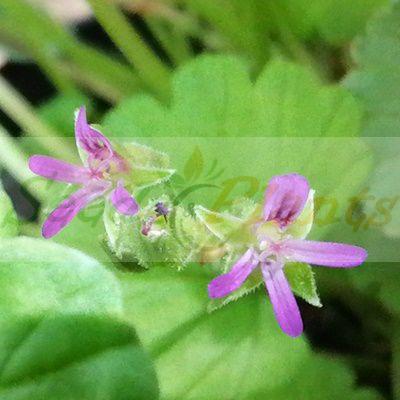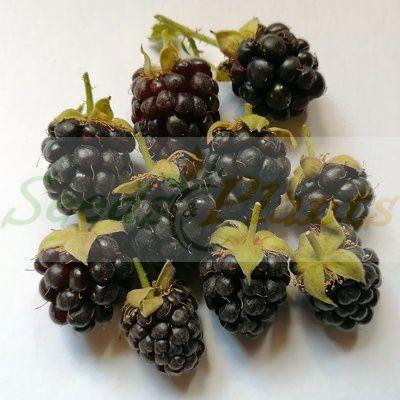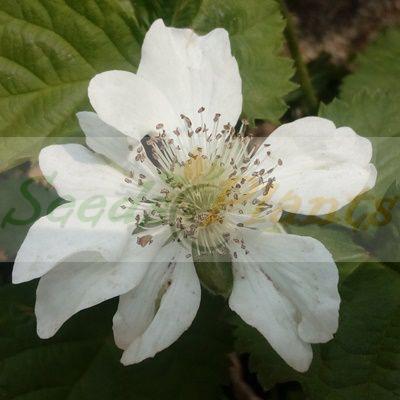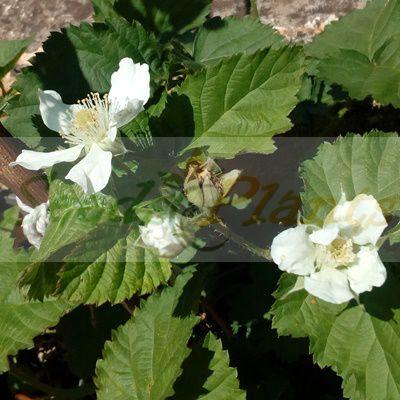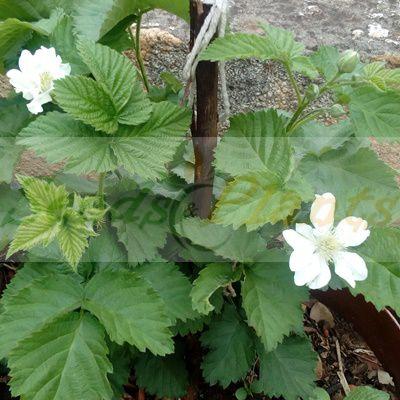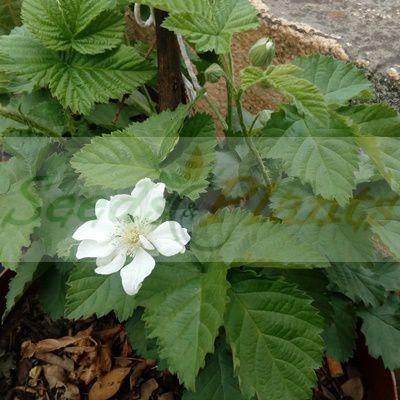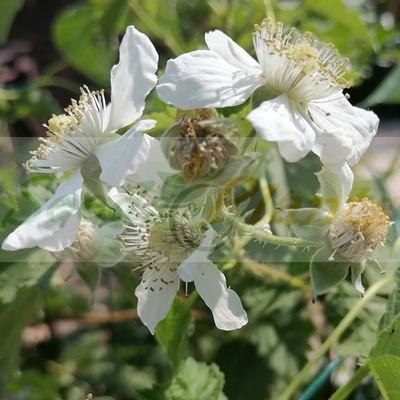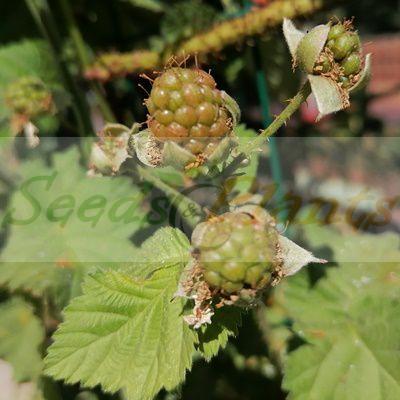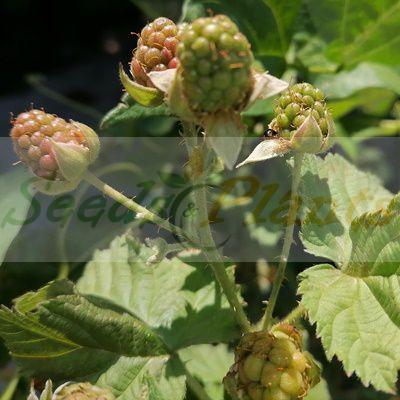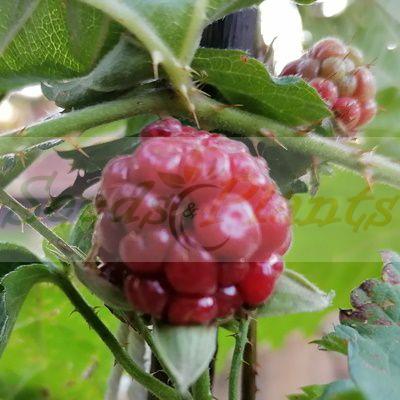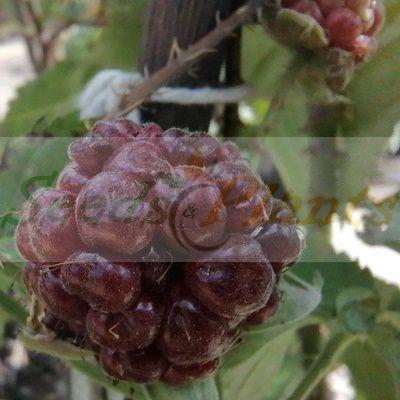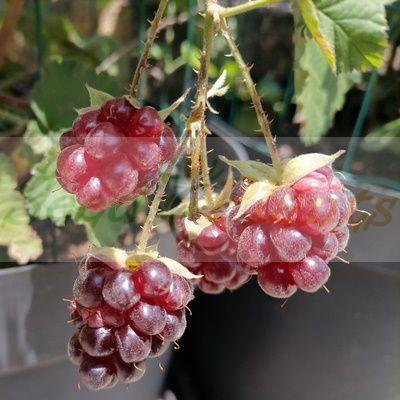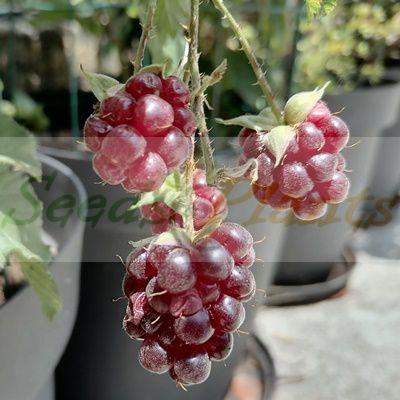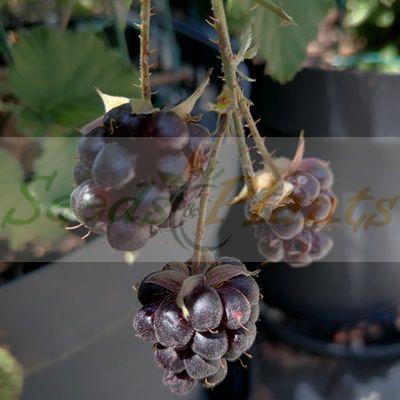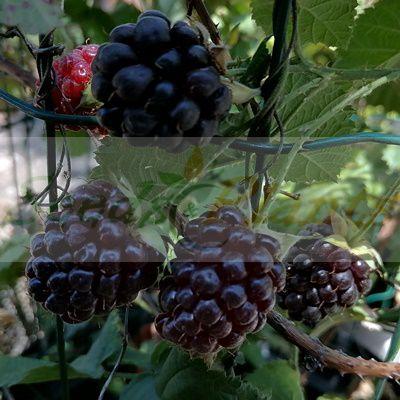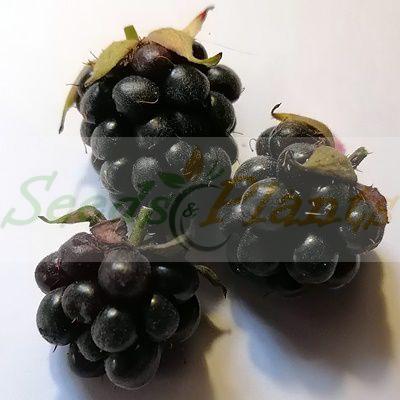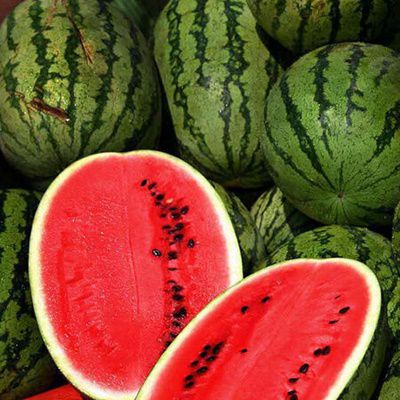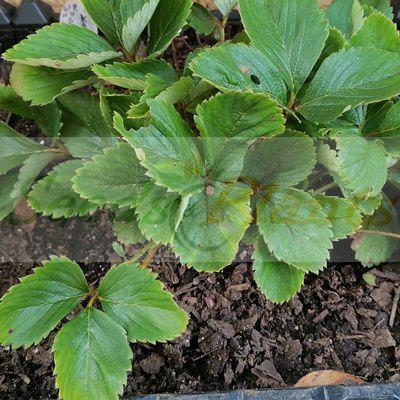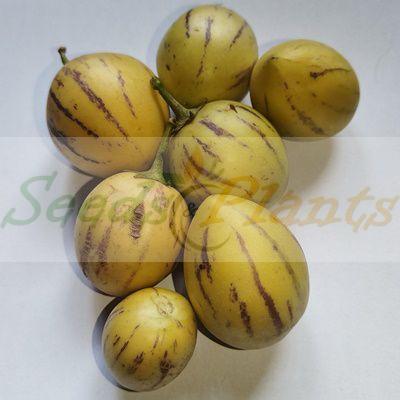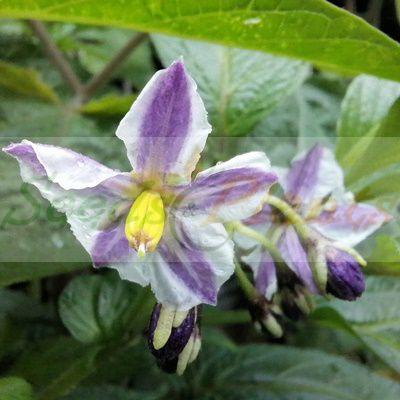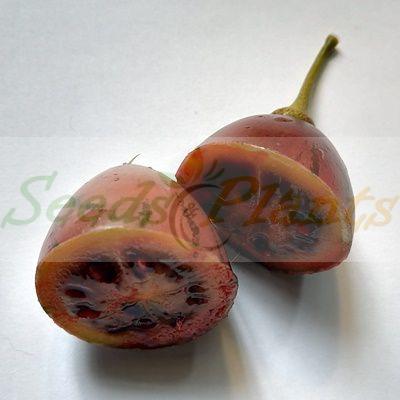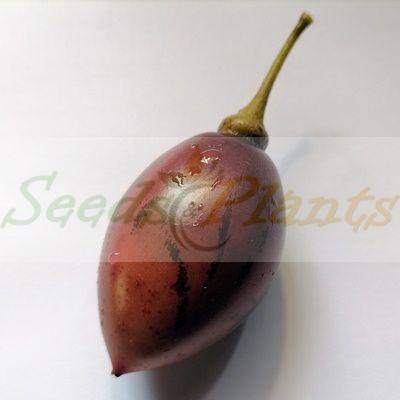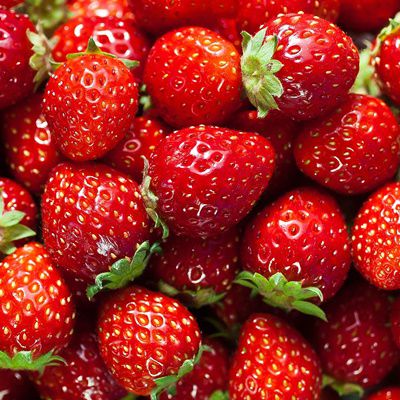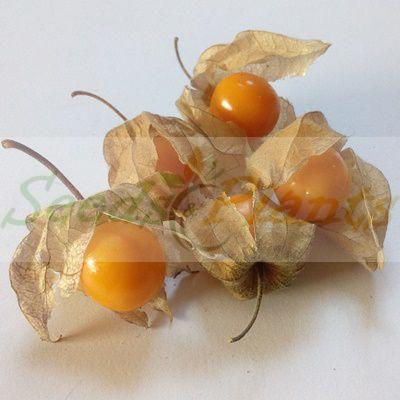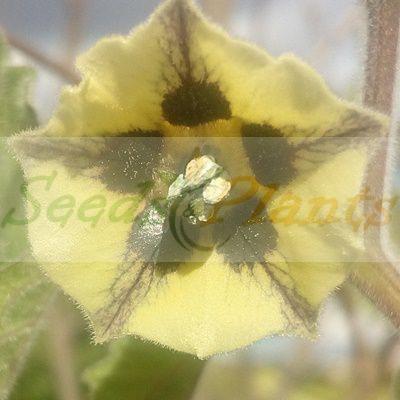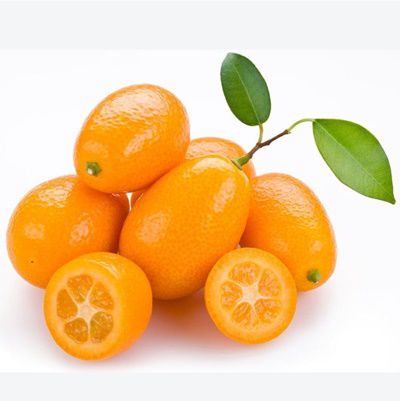🍒 Fruit Quick Facts
Fruit Info
- 🌍 Origin / Region: Europe, Middle East, Western Asia
- 🍽️ Culinary Use: Baking, Desserts, Jams and Jellies, Juices and Syrups, Liqueurs/Wines, Pies and tarts, Raw Eating, Salads
- 🥗 Edible Part: Berry, Leaf
- 😋 Flavor Profile: Sweet, Sweet-tart
Growth Traits
- 🌱 Life Cycle: Perennial
- 🌾 Plant Type: Bramble, Shrub
- 🔁 Fruiting Needs: Needs Only 1 Plant
- 🪴 Growth Habit: Spiny, Sprawling, Trailing
- 🌸 Flower Color: White
- 🌿 Foliage Type: Deciduous
- 🦋 Pollinator Method: Attracts Bees, Attracts Beetles, Attracts Hoverflies, Self-pollinating
Growing Requirements
- 🌞 Sun Exposure: Full Sun
- 💧 Water Needs: Avoid Overwatering, Regular Water, Water Deeply
- ☀️ Growing Conditions: Cold Tolerant, Frost Tolerant, Low drought tolerance, Moderate Heat Tolerance
- 🟤 Soil Preference: Compost Enriched, Fertile, Loam, Moist, Rich Organic, Sandy, Well-Drained
Youngberry – 20 Seeds
(Rubus caesius)
R50.00
Youngberry is a cross of a specific blackberry variety called “Phenomenal” and a Mayes Dewberry. The berries are sweeter and more succulent than other blackberry varieties.
Seed Type: Organic – Harvested from our own plants.
Indoor Sowing: Cold Stratification and then transplant once big enough.
Direct Sowing: Autumn and Early Winter.
Only 1 left in stock
🍒 Fruit Quick Facts
Fruit Info
- 🌍 Origin / Region: Europe, Middle East, Western Asia
- 🍽️ Culinary Use: Baking, Desserts, Jams and Jellies, Juices and Syrups, Liqueurs/Wines, Pies and tarts, Raw Eating, Salads
- 🥗 Edible Part: Berry, Leaf
- 😋 Flavor Profile: Sweet, Sweet-tart
Growth Traits
- 🌱 Life Cycle: Perennial
- 🌾 Plant Type: Bramble, Shrub
- 🔁 Fruiting Needs: Needs Only 1 Plant
- 🪴 Growth Habit: Spiny, Sprawling, Trailing
- 🌸 Flower Color: White
- 🌿 Foliage Type: Deciduous
- 🦋 Pollinator Method: Attracts Bees, Attracts Beetles, Attracts Hoverflies, Self-pollinating
Growing Requirements
- 🌞 Sun Exposure: Full Sun
- 💧 Water Needs: Avoid Overwatering, Regular Water, Water Deeply
- ☀️ Growing Conditions: Cold Tolerant, Frost Tolerant, Low drought tolerance, Moderate Heat Tolerance
- 🟤 Soil Preference: Compost Enriched, Fertile, Loam, Moist, Rich Organic, Sandy, Well-Drained
The Youngberry (Rubus caesius) is a variety of blackberry that is botanically classified as Rubus caesius. It is a hybrid that resulted from the cross of a specific blackberry variety called “Phenomenal” (a Blackberry-Raspberry cross) and a Mayes Dewberry. Youngberries were developed in 1905 by the famous fruit grower, Byrnes M. Young. While working in Morgan city, Louisiana, he encountered numerous failures in breeding another blackberry cultivar, the loganberry. After corroborating with Luther Burbank, who had created the ‘Phenomenal’ blackberry–raspberry hybrid, he decided to cross it with a dewberry and had immediate success. The Youngberry was born and subsequently introduced to commercial markets in 1926.
They are especially prized by berry growers because they typically ripen up to 2 weeks earlier than most other blackberry varieties. They berries have a solid core surrounded by fleshy drupes that are extremely fragile and larger than those of other blackberries. They are spherical to oblong with a tapering conical shape and turn a deep purplish-black when ripe. The berries are sweeter and more succulent than other blackberry varieties with a delicate texture bursting with juiciness.
It is a deciduous shrub that normally grows about 2 m tall with biennial stems which die after fruiting in their second year. The stems are thorny with irregular sized prickles, greenish-yellow to brown. Alternate leaves are hairy above and below. The fruit start off green when young, turning to deep red and finally dark purplish black when ripe.
Growing Youngberry
Indoor Sowing: Cold Stratification and then transplant seedlings once big enough.
Direct Sowing: Autumn and Early Winter.
- The seeds need to be stratified before planting.
- Place the seeds in a resealable plastic bag along with a handful of damp peat moss. Seal the bag, and place in a refrigerator.
- Keep the seeds chilled for 12 to 16 weeks.
- Fill seed trays with seed starter soil, and spread the blackberry seeds on top of the soil.
- Lightly cover the seeds with soil, and place in a warm area.
- Seed germination does not require bright light since the seeds are covered with soil.
- Mist the soil with water in a spray bottle whenever the soil begins to dry out.
- Once seedlings begin to sprout, move the tray to an area with bright light.
- When transplanting into the garden, select a planting area in full to partial sun.
- The plant prefers light, medium and heavy soils, slightly acidic to basic and well-drained soil
- Spread a layer of well-rotted compost over the planting area and work the compost into the top 8 inches of soil. This gives the plants a good source of slow-release nutrients. Smooth the soil with a rake.
- Dig holes with a hand trowel only as deep and wide as the seedlings’ root balls.
- Place the seedlings in the holes, and fill with soil.
- Gently firm the soil around the brambles so that they stand up.
- Water the soil around the base of the plants until it is slightly muddy.
- Give the berry plants 1 inch of water each week when there is no rainfall during the summer.
- Mulching benefits Youngberry bushes by reducing weed growth, slowing soil moisture evaporation and providing slow-release nutrients. Keep the mulch layer thick throughout the life of the bushes.
- Can be successfully grown in containers as well.
Can this plant be used for culinary purposes?
Youngberry is traditionally used for culinary purposes such as baking and desserts.
Disclaimer
Medicinal Information:
All medicinal information on this website is for educational and informational purposes only and may not be construed as medical advice. The information is not intended to replace medical advice or treatment offered by healthcare professionals.
Seeds, Plants, Plant Cuttings, Geophytes and Dried Herbs:
In some countries and provinces, certain plants are deemed as invasive and are not allowed to be planted at all, whilst some plants are allowed to be grown only in certain areas or provinces. The onus is on you as the buyer to familiarize yourself with the regulations pertaining to your location, before purchasing any of our seeds, plants, plant cuttings, geophytes or dried herbs. We will not be held liable, should you purchase any seeds, plants, plant cuttings, geophytes or dried herbs. from us which are prohibited in your country or province.


